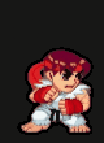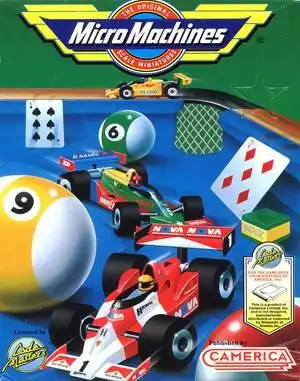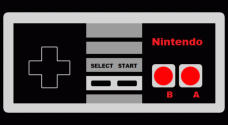Remember the thrill of steering a miniature race car across a breakfast table, dodging spilled cereal and navigating jam jar obstacles? For a generation of gamers, that was the magic of Micro Machines. This iconic series from Codemasters took the simple concept of tiny toy cars and blew it up into some of the most inventive and endlessly replayable classic games of the 8-bit and 16-bit eras, and beyond.
It wasn't just about speed; it was about perspective, clever track design, and chaotic multiplayer fun that packed more punch than many full-sized racers. Let's take a trip back to the world where your living room became a grand prix circuit.
The Miniature Magic: What Made Micro Machines Special?
The brilliance of the Micro Machines games lay in their unique approach. Instead of realistic tracks or fantastical landscapes, they grounded the action in the mundane – but seen from a giant's point of view.
Unconventional Tracks, Epic Races
Racing across a pool table, weaving through garden gnome territory, or navigating the treacherous waters of a bathtub – these were the playgrounds of Micro Machines. Everyday objects became challenging hazards and strategic shortcuts. A comb might be a chicane, a book a ramp, and a puddle a dangerous hydroplane zone. This fresh perspective kept every race feeling novel and exciting.
Tiny Cars, Big Personalities
While the cars were small, they weren't all the same. From speedy sports cars and chunky trucks to hovercraft and even helicopters (in later titles), each vehicle often handled differently, adding a layer of strategy to mastering the various tracks. Choosing the right vehicle for a specific environment could mean the difference between victory and being knocked off the edge of a desk.
Multiplayer Mayhem
Perhaps the most enduring legacy of Micro Machines is its legendary multiplayer. Forget split-screen; the classic top-down view meant everyone shared the same screen, leading to hilarious pile-ups, frantic overtaking, and the infamous "screen scrolling" mechanic where falling too far behind your opponents eliminated you from the current lap. The Sega Genesis/Mega Drive versions, especially Micro Machines 2: Turbo Tournament, were famous for the J-Cart, which allowed up to eight players to crowd around the console, controllers in hand, sharing pads in pairs for ultimate couch co-op chaos.
A Trip Down Memory Lane: Key Games in the Series
The Micro Machines series spanned numerous platforms and iterations, but a few stand out as defining moments:
- Micro Machines (1991): The original classic that started it all, establishing the top-down view and household tracks on systems like the NES, Genesis/Mega Drive, and various home computers.
- Micro Machines 2: Turbo Tournament (1994): Often hailed as one of the best, this sequel refined the formula, added new vehicles (like hovercraft!), and introduced the revolutionary J-Cart on the Mega Drive for massive multiplayer fun. The MS-DOS version even included a track editor!
- Micro Machines V3 (1997): Brought the series into the 3D era, appearing on PlayStation and N64. While the perspective shifted slightly, it retained the core chaotic gameplay and introduced weapons to the mix.
- Micro Machines V4 (2006): Considered by many as the true successor to V3, this title expanded the vehicle count and tracks, bringing the miniature racing action to PS2, PC, and handhelds.
While the series saw other entries, including spin-offs and later reboots (some more fondly remembered than others), these titles capture the essence of what made Micro Machines a retro gaming icon.
Reliving the Glory: Where to Play Today
Feeling the urge to race a tank across a billiard table again? Thankfully, revisiting the classic Micro Machines games is possible for retro enthusiasts:
- Emulation: For the PC classics like Micro Machines and Micro Machines 2 on DOS, emulators like DOSBox are your best friend. They allow you to run these old games on modern computers. You might find these old DOS versions available on sites like Archive.org.
- Console Emulation: Relive the J-Cart madness by using emulators for consoles like the Sega Genesis/Mega Drive.
- Digital Storefronts: Keep an eye on digital stores like GOG.com or Steam. While availability can vary, sometimes classic Codemasters titles pop up.
- Original Hardware: If you're a purist, dusting off your old consoles and cartridges is always an option!
Why Micro Machines Still Matters
Beyond the pure fun, Micro Machines carved out a unique niche in the racing genre. It proved that innovation in perspective and environment design could be just as impactful as realistic graphics or complex physics. It's a testament to creative game design and the enduring appeal of simple, accessible, and wildly entertaining multiplayer experiences.
For many, Micro Machines isn't just a game series; it's a core memory of competitive afternoons spent gathered around a screen, shouting, laughing, and trying desperately not to get scrolled off the track. It's a reminder that the biggest fun often comes in the smallest packages.
Frequently Asked Questions
Q: Which Micro Machines game had the J-Cart for 8 players? A: Micro Machines 2: Turbo Tournament and Micro Machines Military on the Sega Mega Drive featured the J-Cart, allowing up to 8 players by sharing controllers.
Q: Can I play the classic Micro Machines games on modern PCs? A: Yes, you can typically play the classic DOS versions using an emulator like DOSBox.
Q: Were there Micro Machines games on Nintendo consoles? A: Yes, the original Micro Machines was released on the NES, and later titles like Micro Machines V3 appeared on the N64.
Q: Is there a recent Micro Machines game? A: Yes, Micro Machines World Series was released in 2017, bringing the classic style to modern platforms, though reception was mixed compared to the originals.
So, if you're looking for a dose of retro racing goodness that's unlike anything else, fire up an emulator or dig out that old console. The tiny cars and giant worlds of Micro Machines are waiting.


